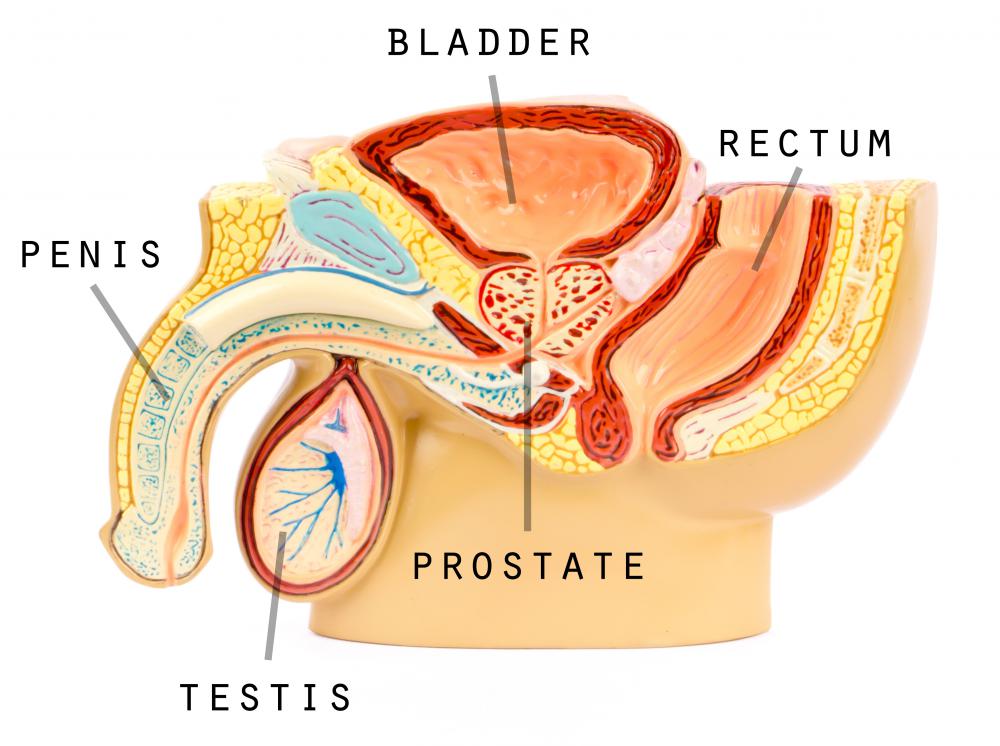At TheHealthBoard, we're committed to delivering accurate, trustworthy information. Our expert-authored content is rigorously fact-checked and sourced from credible authorities. Discover how we uphold the highest standards in providing you with reliable knowledge.
What is a Circumcision Scar?
A circumcision scar results from a common surgical procedure performed where some or all of the foreskin is removed from the penis. The scar is located just under the head of the penis, and is characterized by a slightly dark ring. The type of procedure used determines the appearance of the scar, although in many cases the circumcision scar fades and is barely noticeable.
Circumcisions on newborns are done with specialized equipment known as the Plastibell, a Gomco clamp, or a Mogen clamp, along with a restraining instrument. Healing usually takes four to six days. Adult circumcisions are generally performed without such implements, and the healing time can take up to six weeks. Depending on the procedure used, the circumcision scar can appear conspicuous or uneven, or it can fade over time.

In the United States, circumcision is generally performed on newborns and is not part of a religious ceremony like it is in the Jewish and Islamic cultures. Considered cosmetic surgery for the most part, circumcision has no effect on the male reproductive system. There is some controversy over circumcision, and many have questioned its medical necessity. The American Medical Association (AMA) released a report in 1999 in which it does not recommend newborn circumcisions other than for religious or ritualistic reasons.

The controversy regarding circumcision is generally about whether or not the procedure is medically necessary. One opinion is circumcision reduces the chances of penile cancer, HIV, and promotes good hygiene. Other opinions contend this is not the case, and the benefits of circumcision do not outweigh the risk of infection of the circumcision scar, damage of the urethra, or excessive bleeding.

Circumcision is most prevalent in the Muslim world, parts of South East Asia, Africa, the United States, The Philippines, Israel, and South Korea. It is relatively rare in Europe, Latin America, parts of Southern Africa, and most of Asia. The World Health Organization estimates 30-33% of males globally are circumcised. The prevalence of circumcision in the United States is estimated at 79%, although percentages seem to vary according to region.

Many feel the loss of the foreskin and resulting circumcision scar is disfiguring, unnecessary, and psychologically harmful. Studies are conflicting, but the American Academy of Pediatrics issued a statement that circumcision is not the answer to optimal penile hygiene, and the AMA states that although circumcision can help prevent phimosis, where the foreskin cannot be retracted from the head of the penis, it should not be considered the sole way to prevent penile cancer, a rare disease.
AS FEATURED ON:
AS FEATURED ON:















Discussion Comments
The reason for performing circumcision is to reduce the chances of getting a venereal disease, such as AIDS or syphilis, by a factor of about six. The UN recommends that in east Africa, where there is the greatest epidemic of AIDS, that the all boys and men be circumcised as the cheapest and easiest way to reduce the epidemic. I was circumcised at 27 and found that sexual function is at least as good as before.
My frenulum was not removed and I have good sensation so it is dependent on the surgeon's ability.
I echo, the foreskin is a functional part of the penis. It has been shown to have many different human cells including pressure of fine touch receptors and thousands of nerve cells. It is meant to work with the glans penis, sliding back and forth over same.
You are quite wrong. Circumcision removes nerves, mucous membranes and the frenulum, male G spot. There is not reason for circumcision and surely if it is cosmetic, not for a doctor or parent to choose.
Post your comments